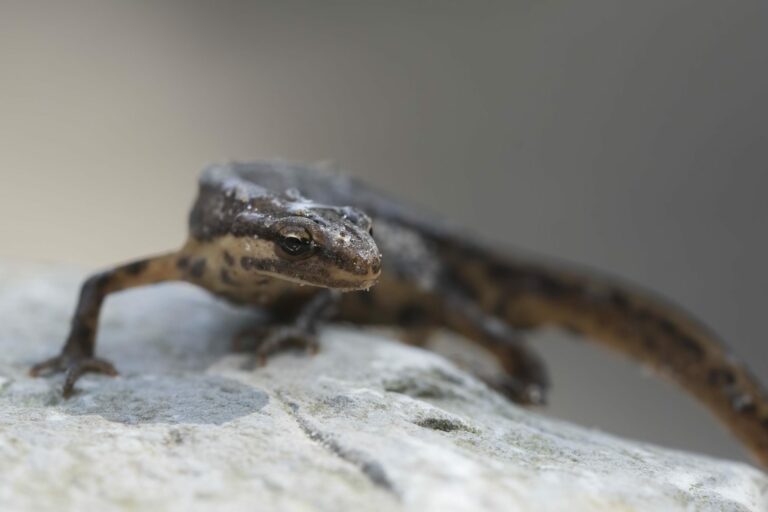Lissotriton vulgaris

Lissotriton vulgaris, also known as the smooth newt or common newt, can reach a length of up to 11 cm and is widespread in large parts of Europe. In Germany, it is the most common species of newt. During the breeding season in spring, the males develop a high, wavy crest on their backs and upper tails (Glandt 2016). The body of the smooth newt is brown in color, with dark spots on the underside. It predominantly inhabits stagnant water bodies rich in aquatic plants, which also serve as breeding sites (Schaefer 2018). Threats to this species include habitat destruction due to factors such as chemicals, mortality from road traffic during migration to breeding sites, and predation by natural enemies (Glandt 2018).
Diet: The smooth newt primarily feeds on insects and other invertebrates.
Conservation status: According to the IUCN Red List of Threatened Species, the population density of this species is stable, and it is classified as “Least Concern.” Under the Federal Nature Conservation Act (BNatschG) and the Federal Species Conservation Ordinance (BArtSchV), Lissotriton vulgaris is considered “specially protected.”
-
Glandt, D (2016)Amphibien und Reptilien. Berlin, Heidelberg: Springer Berlin Heidelberg.
-
Glandt, D (2018)Praxisleitfaden Amphibien- und Reptilienschutz. Schnell – präzise – hilfreich. Berlin, Heidelberg: Springer Berlin Heidelberg.
-
Schaefer, M (2018)Brohmer – Fauna von Deutschland. Ein Bestimmungsbuch unserer heimischen Tierwelt: Quelle & Meyer Verlag GmbH & Co